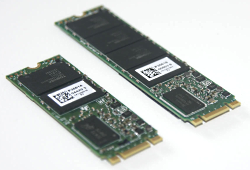Informações sobre dispositivos
Installing the latest USB Driver. Click the Driver Tab. Click the Update Driver button. Allow Windows to search the internet and update the driver automatically: Win 7 searches the internet and installs the driver. Win XP shows a dialog. Choose yes to allow a search and click Next. Then choose yes to allow automatic installation, and click Next. About Sound Card Driver: Usually, Windows operating systems apply a generic audio driver that allows computers to recognize the sound card component and make use of its basic functions. When enabled by proper files, the characteristics of the sound card (like model, manufacturer, number of channels).
DIGSI 5 is the versatile engineering tool for parameterization, commissioning and operating all SIPROTEC 5 devices. Its innovative user interface includes context-sensitive user instructions. Simple connection to the device via USB enables you to work with a device easily and efficiently. The PC operating program DIGSI 4 is the user interface to the SIPROTEC devices. It is designed with a modern, intuitive user interface. With DIGSI 4, SIPROTEC devices are configured and evaluated – it is the tailored program for industrial and energy distribution systems. They saw arrests taking place in several parts of France by the General Directorate of Internal Security (DGSI), France’s internal intelligence agency. The leader of the group was identified as 36-year-old Florian D., a militant who had previously travelled to Syria to fight alongside Kurdish forces against the Islamic State before returning.
- /XonarSI.INF
[ids]- PCIVEN_13F6&DEV_8788&SUBSYS_855E1043
[version]- Signature
$CHICAGO$ - Class
MEDIA - ClassGUID
{4d36e96c-e325-11ce-bfc1-08002be10318} - provider
ASUSTeK - DriverVer
10/03/2012,7.12.8.1815 - CatalogFile
cmudaxp.cat - CatalogFile.ntamd64
cmudaxp64.cat
[strings]- ProviderName
ASUSTeK - MfgName
ASUSTeK - DiskDescription
ASUS Xonar DG SI Audio Driver - CMUDA.DeviceDesc
ASUS Xonar DG SI Audio Device - RearWave.szPname
ASUS Xonar DG SI Audio - RearTopo.szPname
ASUS Xonar DG SI Audio Mixer - FrontWave.szPname
ASUS Xonar DG SI Front Panel - FrontTopo.szPname
ASUS Xonar DG SI Front Panel Mixer - ConvWave.szPname
ASUS Xonar DG SI Audio Converter - ConvTopo.szPname
ASUS Xonar DG SI Audio Converter Mixer - WaveInWave.szPname
ASUS Xonar DG SI Audio Wave In - WaveInTopo.szPname
ASUS Xonar DG SI Audio Wave In Mixer - CMUDA.SvcDesc
ASUS Xonar DG SI Audio Interface - CMI8788.DeviceDesc
ASUS Xonar DG SI Audio Device - MediaCategories
SYSTEMCurrentControlSetControlMediaCategories - CMPCI.UART.szPname
MPU-401 - Proxy.CLSID
{17CCA71B-ECD7-11D0-B908-00A0C9223196} - KSCATEGORY_AUDIO
{6994AD04-93EF-11D0-A3CC-00A0C9223196} - KSCATEGORY_RENDER
{65E8773E-8F56-11D0-A3B9-00A0C9223196} - KSCATEGORY_CAPTURE
{65E8773D-8F56-11D0-A3B9-00A0C9223196} - KSCATEGORY_TOPOLOGY
{DDA54A40-1E4C-11D1-A050-405705C10000} - KSNAME_RearWave
AA_Wave - KSNAME_RearTopo
AA_Topology - KSNAME_FPWave
AB_Wave - KSNAME_FPTopo
AB_Topology - KSNAME_CPWave
CP_Wave - KSNAME_CPTopo
CP_Topology - KSNAME_WIWave
WI_Wave - KSNAME_WITopo
WI_Topology - KSNAME_UART
UART - UDAGUID.PhoneVolume
{0A8C1A87-42B0-11D2-95D2-00C04FB925D3} - UDAGUID.PhoneMute
{0A8C1A88-42B0-11D2-95D2-00C04FB925D3} - UDAGUID.MonoOutSelect
{0A8C1AA9-42B0-11D2-95D2-00C04FB925D3} - UDAGUID.Spdif
{5AEA5794-AA8A-4aaf-AB8B-4854C97B5D90} - UDAGUID.Video
{32E06BEE-BD20-48b8-9552-E5240EAF05BC} - UDAGUID.StereoMix
{3EC8502B-5D89-4d2d-A78A-FF45CA18A3B7} - UDAGUID.Aux
{AF24C5CC-A32D-479f-9FFB-BFD00E135BA9} - UDAGUID.AuxPhone
{1A607E05-8C29-43B0-8E60-FB24D266EAE8} - UDAGUID.MonoIn
{51C53816-3407-4BA0-8B4D-B4FCADC65A54} - UDAGUID.PcBeep
{697e35a2-97c8-42d1-a138-2de6a64a8bc3} - UDAGUID.WaveRecord
{209A9FAC-0A88-4ec9-AEF4-84C01BD5477F} - UDAGUID.LineIn1
{3a8fe731-da60-4bd7-ad6f-7e16e40c8a84} - UDAGUID.LineIn2
{3b5c45cb-2e4c-4a64-8bf3-5f648ce235d6} - UDAGUID.InputMonitor
{E23E291E-1B5B-4657-B046-0190383ABCA1} - UDAGUID.SpdifInSel2
{80755448-5BF6-49d1-A63A-9DB6D0B8A74F} - UDAGUID.SpdifValid
{D0DF1519-7207-4135-9EFD-934061113FFA} - UDAGUID.SpdifInReverse
{7F728EE3-0459-4ec8-B0F3-CCFDCCB9086C} - UDAGUID.AltIn
{F35C2296-20FF-46e8-BDAF-56B5DDFC9CFB} - UDAGUID.FrontMicIn
{E9E1310D-3D9E-4b83-AA92-B6A2EC208B8C} - UDANode.PhoneVolume
Phone Volume - UDANode.PhoneMute
Phone Mute - UDANode.MonoOutSelect
Mono Out Select - UDANode.Spdif
SPDIF In - UDANode.Video
TV Tuner Audio - UDANode.StereoMix
Stereo Mix - UDANode.Aux
Aux - UDANode.AuxPhone
Aux/Phone - UDANode.MonoIn
Mono In - UDANode.PcBeep
PC Beep - UDANode.WaveRecord
Wave - UDANode.LineIn1
Front Line-In 1 - UDANode.LineIn2
Front Line-In 2 - UDANode.InputMonitor
Monitoring - UDANode.SpdifInSel2
Front Panel S/PDIF-IN - UDANode.SpdifValid
Validity Check - UDANode.SpdifInReverse
Reverse S/PDIF-IN Format - UDANode.AltIn
ALT - UDANode.FrontMicIn
Front Mic - Audio3D_CLSID
{D8F1EEE0-F634-11CF-8700-00A0245D918B} - KSNODETYPE_CD_PLAYER
{DFF220E3-F70F-11D0-B917-00A0C9223196} - KSNODETYPE_ANALOG_CONNECTOR
{DFF21FE1-F70F-11D0-B917-00A0C9223196} - PKEY_AudioEndpoint_Association
{1DA5D803-D492-4EDD-8C23-E0C0FFEE7F0E},2 - PKEY_AudioDevice_EnableEndpointByDefault
{F3E80BEF-1723-4FF2-BCC4-7F83DC5E46D4},4
USB Drivers for the DataMate II
Try this quick method first. It should should work with most systems.Drivers Designjet 500

Drivers Dgsi E
- Download and install the most recent software: Check our downloads page for DigiPro2 or DMM.
- Download and run the USB Driver Installer: CDM2802_setup.exe.
- Connect the DataMate II and switch on. Windows should recognize the device.
- If you have problems, please look at the DataMate Communcations FAQ.
Drivers Dgsi Jobs
Multi-Part SetupThis multipart setup should not be necessary for most systems. . Part 1: Installing the Digitilt DataMate USB Driver | |
| |
| |
| |
| |
| |
| |
| |

Drivers Dgsi Online
Part 2: Installing the Digitilt DataMate Virtual Comm Port | |
| |
| |
| |
| |
| |
Tell DMM or DigiPro2 which Comm Port to use. | |
| |
| |
If the Wizard does not appear.... | |
You must start the wizard manually.
| |
| |
